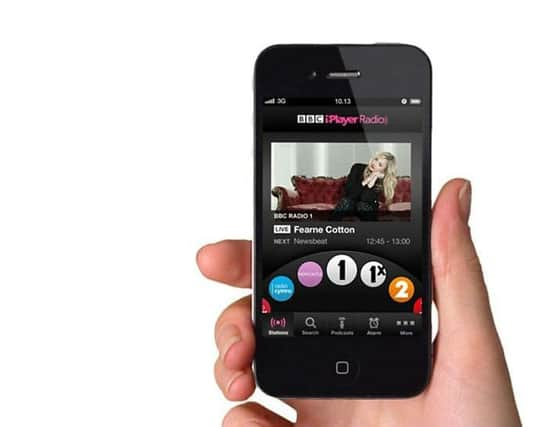Why the best way of listening to the radio is no longer a radio


Of course, people have been taping Pick of the Pops for generations, by placing the microphone of a tape recorder in front of the loudspeaker, but for convenience and portability it’s a method whose shortcomings outweigh its advantages.
It has also been possible to employ various Heath Robinson solutions for capturing the output of Radio 4 on to a computer, but they have been of questionable legality and lacking in user-friendliness.
Advertisement
Hide AdAdvertisement
Hide AdNow, finally, the BBC has made the process legitimate, with a website and app that lets you download programmes of your choosing and listen to them on your phone, whether or not you are connected to the internet at the time.
Radio has been a poor relation within the iPlayer since its launch 11 years ago. It was possible from quite early on to download TV shows and save them to a hard drive for viewing within 30 days, but the same functionality has come to radio only recently. Its absence hitherto meant that you had to contend with dropped signals and stuttering streams whenever you wanted to play something on the move.
But the latest version represents a leap forwards. You can now subscribe to favourite programmes and series, and get a list of new episodes whenever you please, and then download them for interruption-free listening.
Yet while the new Radio iPlayer is perfect for not missing The Archers or Just A Minute, it is not the only type of wireless receiver for this switched-on age. Some of its competitors go so far as to challenge your perception of what radio still is.
Advertisement
Hide AdAdvertisement
Hide AdIf it’s music you want, the disc jockey- driven selections on Radio 2 and Radio 6, or even Classic FM, probably contain less of what you like than a stream compiled specifically for you. Musicovery and similar sites will compile playlists on-the-fly based on music you have requested in the past. Other services like Spotify and Hitsradio.com will create a channel for you based on your favourite artist or genre.
There is then the raft of websites and apps that tap into radio stations around the world and serve them up as if they were as local as Stray FM. Some of these stations broadcast on AM and FM in various parts of the world; others are internet-only. You can browse by location or genre and save your most-used stations to a list of favourites. TunedIn is the best known of these services, and Jango is also a popular choice.
The one thing all of them have in common - the iPlayer included - is that no physical radio is involved, whether analogue or DAB. The truth is that streaming technology far outstrips broadcasting in choice, convenience and functionality, and the proliferation of services, even from the BBC, starts to make the purchase of an expensive radio receiver look like something of an extravagance.
That’s not to say that tradition doesn’t still have its place - the 21st century has yet to come up with a better way of listening to Test Match Special in the stand at Headingley than with a portable transistor in your top pocket. For most other listening, though, the internet is the new Home Service.